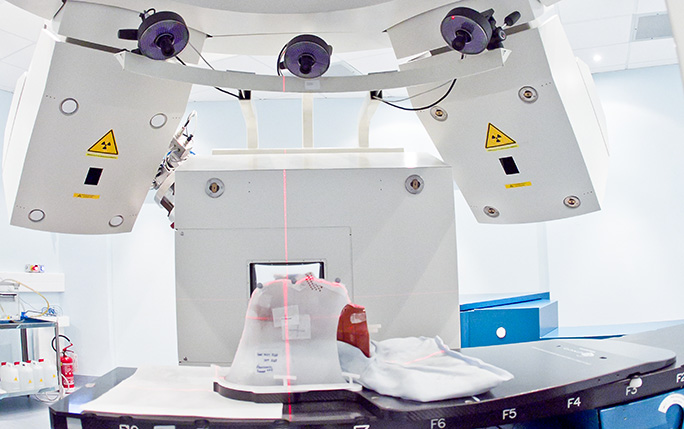Michelle Lis visits CNAO for experiments

Michelle Lis and the moving targets team from GSI Helmholtzzentrum fuer Schwerionenforschung recently performed first validation experiments and integration testing at the National Centre of Oncological Hadrontherapy (CNAO) in Pavia, Italy.
These experiments confirmed the functionality of the 4D robust optimized dose delivery method on a clinical treatment control system. The initial functionality experiments have already been performed at GSI in February, confirming the ability to accurately mitigate motion for one-energy plans. The system was then modified for compatibility at CNAO’s peripheral hardware and timing system, including the interlock system.
The experiments performed at CNAO and at GSI involved delivering 2D geometries to a matrix detector and films, which were mounted on a sliding platform. The platform moved in a sinusoidal manner, to simulate simple respiratory motion, and the motion was measured with a laser distance sensor, and fed back into a motion monitoring system, which directs treatment delivery sequence and progression. The results of these experiments have shown that the 4D robust optimization strategy can provide clinically acceptable dose deliveries in simplified settings, and the final step in her study will be to adopt more realistic patient scenarios into the system.
The completion of Michelle’s project will provide a clinically viable solution, targeted to treat lung and other thoracic tumor patients who generally have low 5-year survival rate. The dose delivery system will provide an accurate method for treating complex tumors while sparing surrounding organs from radiation damage.